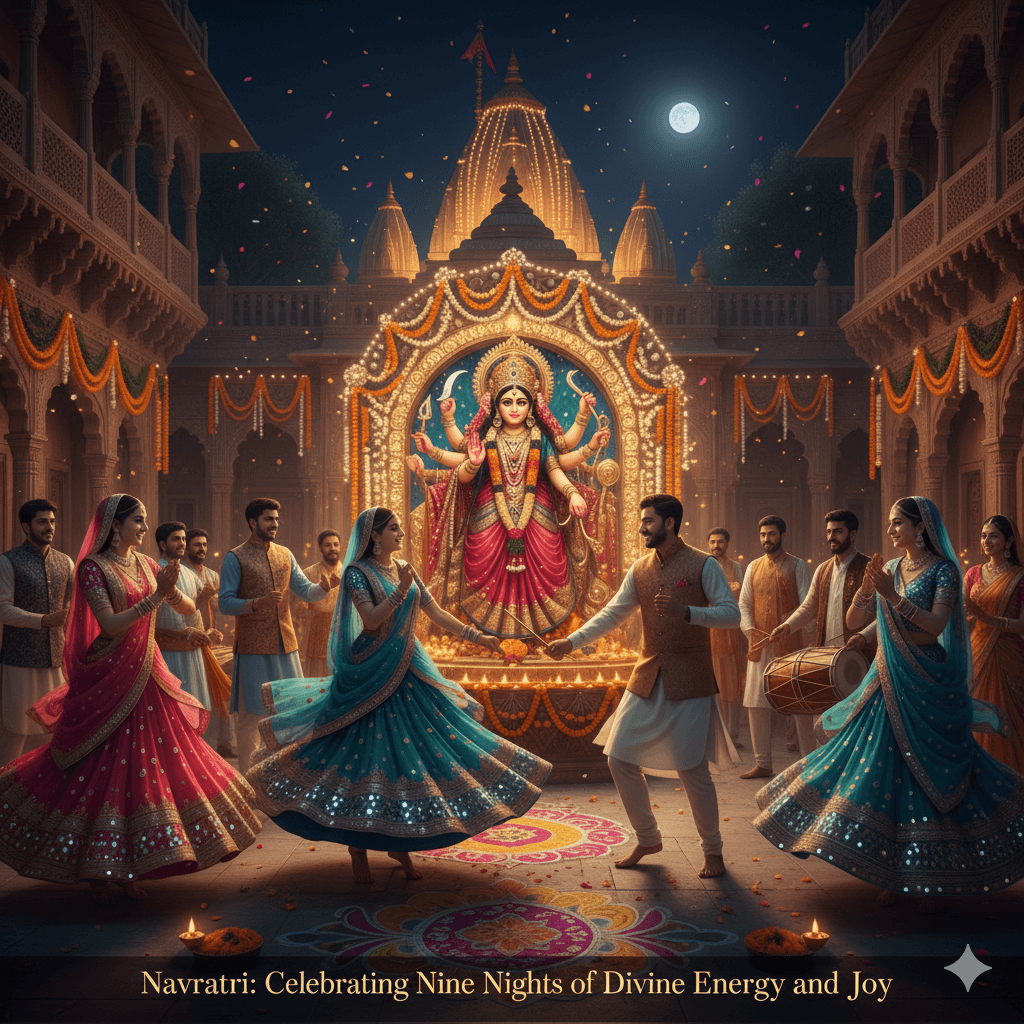Navratri, one of the most revered and vibrant festivals in Hinduism, is a nine-night celebration honoring the divine feminine energy, Goddess Durga. Observed with great fervor across India, Navratri is not just a festival but a spiritual journey that brings people together in devotion, dance, and prayer.
The Significance of Navratri
The word “Navratri” is derived from two Sanskrit words: “Nav,” meaning nine, and “Ratri,” meaning night. Over these nine nights, devotees worship nine different forms of Goddess Durga, each representing a unique aspect of her power and grace.
These nine forms are:
1. Shailputri (Daughter of the Mountains)
2. Brahmacharini (The Ascetic)
3. Chandraghanta (The One with a Crescent Moon)
4. Kushmanda (The Creator of the Universe)
5. Skandamata (The Mother of Skanda/Kartikeya)
6. Katyayani (The Warrior Goddess)
7. Kaalratri (The Destroyer of Darkness)
8. Mahagauri (The Goddess of Purity and Peace)
9. Siddhidatri (The Bestower of Supernatural Powers)
Each day of Navratri is dedicated to one of these forms, and devotees offer prayers, perform rituals, and fast to seek the blessings of the Goddess.
The Festivities and Traditions
Navratri is celebrated with immense enthusiasm and devotion. The festival is marked by various traditions and activities:
– Garba and Dandiya Raas: In Gujarat and other parts of India, people gather in large numbers to perform Garba (a traditional dance) and Dandiya Raas (a dance form using sticks). These dances are not just a form of entertainment but also a way to honor the Goddess.
– Fasting and Feasting: Many devotees observe fasts during Navratri, eating only specific foods like fruits, vegetables, and grains. The fasts are often broken with elaborate meals, and special dishes like petha, sabudana khichdi, and kuttu ki puri are prepared.
– Decorations and Pujas: Homes are decorated with lights, flowers, and rangoli. People set up small altars in their homes to worship the Goddess and perform daily pujas (prayers).
– Kanya Puja: On the eighth or ninth day of Navratri, young girls (considered to be embodiments of the Goddess) are worshiped and fed a meal as part of the Kanya Puja tradition. This practice is believed to bring prosperity and good fortune.
The Cultural Impact of Navratri
Navratri is not just a religious festival; it is also a celebration of culture and community. The festival brings people together, transcending age, gender, and social barriers. The music, dance, and festivities create an atmosphere of joy and unity.
Conclusion
Navratri is a celebration of the divine feminine, a tribute to the strength, grace, and power of Goddess Durga. It is a time for spiritual reflection, cultural expression, and communal harmony. As we celebrate these nine nights, we are reminded of the eternal energy of the Goddess that permeates the universe.
Whether you participate in the dances, observe the fasts, or simply enjoy the festivities, Navratri offers something for everyone. It is a time to connect with tradition, with community, and with the divine.


